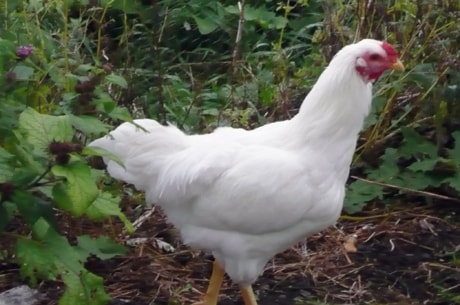MONTREAL — For several years, a small group of poultry enthusiasts has been pushing to save an authentic Canadian chicken from extinction.
They finally cooked up a plan to save the rare breed of barnyard fowl from oblivion — and it involves tossing thousands of them on the barbecue.
The Chantecler chicken, a bird once believed to be extinct, remains alive, but only around 2,000 of them are thought to be in existence and the majority of them are in Quebec.
The province now plans to ensure the breed’s continued survival — by marketing it for the dinner plate.
Three organizations representing Quebec’s egg and poultry producers recently signed an agreement to allow limited commercial production of the Chantecler.
“The only way to save the breed is to eat it,” Fred Silversides, a poultry research scientist with Agriculture and Agri-Food Canada, said from his office in Agassiz, B.C.
Silversides mapped out the breeding plan that will preserve the Chantecler’s gene pool and create business opportunities for producers.
“Any breed, of any species, if you’re using it, then the population is strong and stable,” he said.
In 1908, Brother Wilfrid, a monk from Oka, Que., began to carefully crossbreed several chicken races to create a Canuck clucker that could withstand this country’s harsh winters.
By 1921, the Chantecler, designed to produce meat and eggs, was officially declared a new breed by the American Poultry Association. The organization lists it among 53 types of chickens from around the world in its large-breed class.
Chantecler producers say the hearty, white birds have lived up to their billing as the chicken best-suited to thrive in the Great White North. The red, fleshy appendages on the Chantecler’s head — also known as combs and wattles — are small, making them frostbite resistant.
Brother Wilfrid’s birds soon became cultural symbols in Quebec, where they were designated as a heritage animal in 1999.
“It’s a traditional race that at one time was part of our culture, of our heritage,” said Andre Auclair, whose farm in St-Paulin, Que., is home to about five per cent of the world’s Chantecler population — or about 100 chickens.
Auclair, director of Quebec’s federation of producers of heritage breeds, estimates there are fewer than 1,500 Chanteclers across Canada, and only about 2,000 in the world.
“It’s on the brink of extinction,” he said in an interview from his home northeast of Montreal.
He said the Chantecler served as a good commercial bird until the poultry industry created today’s “high performance hybrids,” which grow fast and pump out eggs at a dizzying rate.
Eventually, Brother Wilfrid’s slower-growing creatures were no longer commercially viable.
But Auclair predicts the Chantecler, which he says has more flavour than most broilers, will sell in a specialized market.
On Sept. 25, Quebec’s poultry and egg producers agreed to take the necessary legal steps to allow 10 farms to raise Chantecler flocks.
